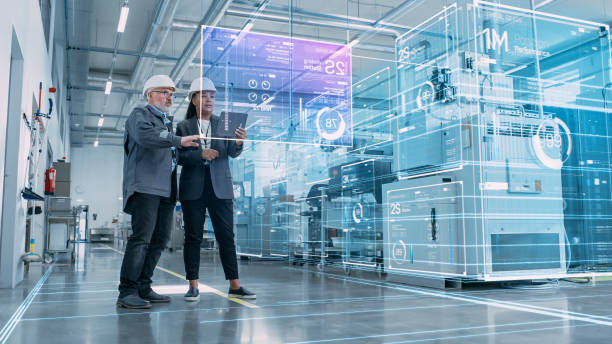
The manual nature of many business processes has been the cause of decline in productivity in many organizations due to increased complexity of business operations in the current world. With advancement of technology speed increasing daily, business entity must adapt to the automation technology trend that is in the market to sustain themselves. As we progress through the world of business automation, with features such as robotic process automation (RPA), artificial intelligence (AI), and machine learning (ML), the horizon looks exciting. Find out high-on-priority future trends in business automation that all organizations have to look at if they would like to be on the brighter side of the future.
The Rise of Hyper-Automation:
Hyper-automation is expected to be one of the most significant automation trends observed in businesses in recent years. It centers on the unity of RPA, AI, and ML where RPA processes are powered by AI and ML. Businesses are increasingly leveraging advanced technologies to streamline operations, including the management of digital infrastructure like website hosting, ensuring seamless and efficient online experiences for their customers. Hyper-automation, on the other hand, means incorporating more advanced RPA into organizations in that it makes it possible to automate processes and decision-making that are otherwise too complicated for traditional forms of automation. These strategies offer a way to provide overall automation in a way that improves operations and customer satisfaction while cutting out human error as well as potential resource inefficiencies.
The Proliferation of Intelligent Automation:
The current trends that continue to evolve with the developments in AI and ML of intelligent automation are set to disrupt business operations. Some of these technologies are involved in the ability to feed in large amounts of data, process these into recognizable patterns and make better and intelligent decisions based on behavioral patterns and algorithms learnt by the technology. SMART systems can learn and develop through various contingencies found in real-life situations and therefore, they undergo improvement with time as they work through the different stages in task accomplishment. This capability has new economic possibilities for various types of industries to carry out the predominant processes and procedures, along with customer service, fraud detection, and predictive maintenance, with a higher level of accuracy and efficiency.
The Rise of Robotic Process Automation:
The use of RPA is on the rise in the present business environment; the growth of its application is predicted to be tipped in the future years. RPA technology then allows the automated handling of routine data processing tasks based on the predefined rules that govern the interaction of the program with the computers programs it interfaces with. It can be effectively used across different business functions like data capturing and encoding, accounts payable and accounts receivable management, report writing among others.
The Emergence of Intelligent Process Automation:
Smart process automation refers to the integration of RPA with advanced features of artificial intelligence and machine learning, which offer a comprehensive automation tool capable of processing more complex work. As businesses increasingly adopt intelligent process automation, leveraging a cheap vps for hosting automation software can provide a cost-effective solution without compromising on performance and scalability. An IPA system can also be programmable for repetitive procedures and can learn from experience and provide wise decisions based on certain analyses. This level of automation is especially beneficial in the fields of healthcare, finance, and supply logistics, as the business processes in these fields are very volatile and have large fluctuations.
The Impact of Automation on the Workforce:
With newer versions of automation technology emerging, there has been a more pressing question on the implications for the workforce. As some occupations may disappear, new demand areas include data science, system architecture, and process improvement. Companies that adopt automation must enhance their human resource capacity and programming to help the employees make adjustments to the emerging market demands. Further, numerous organizations will be forced to embrace a culture of continuous learning to master the new technologies.
All in all, it can be concluded that future of business automation is prosperous and full of promising future. As a result, the integration of these technologies must be done systematically, anchored on a firm’s strategies, values and vision as well as enabling an innovation-driven culture. Anyone who manages to keep in pace with these automation trends and how to utilize them to the maximum will be very successful especially in regard to competition in the business industry.

